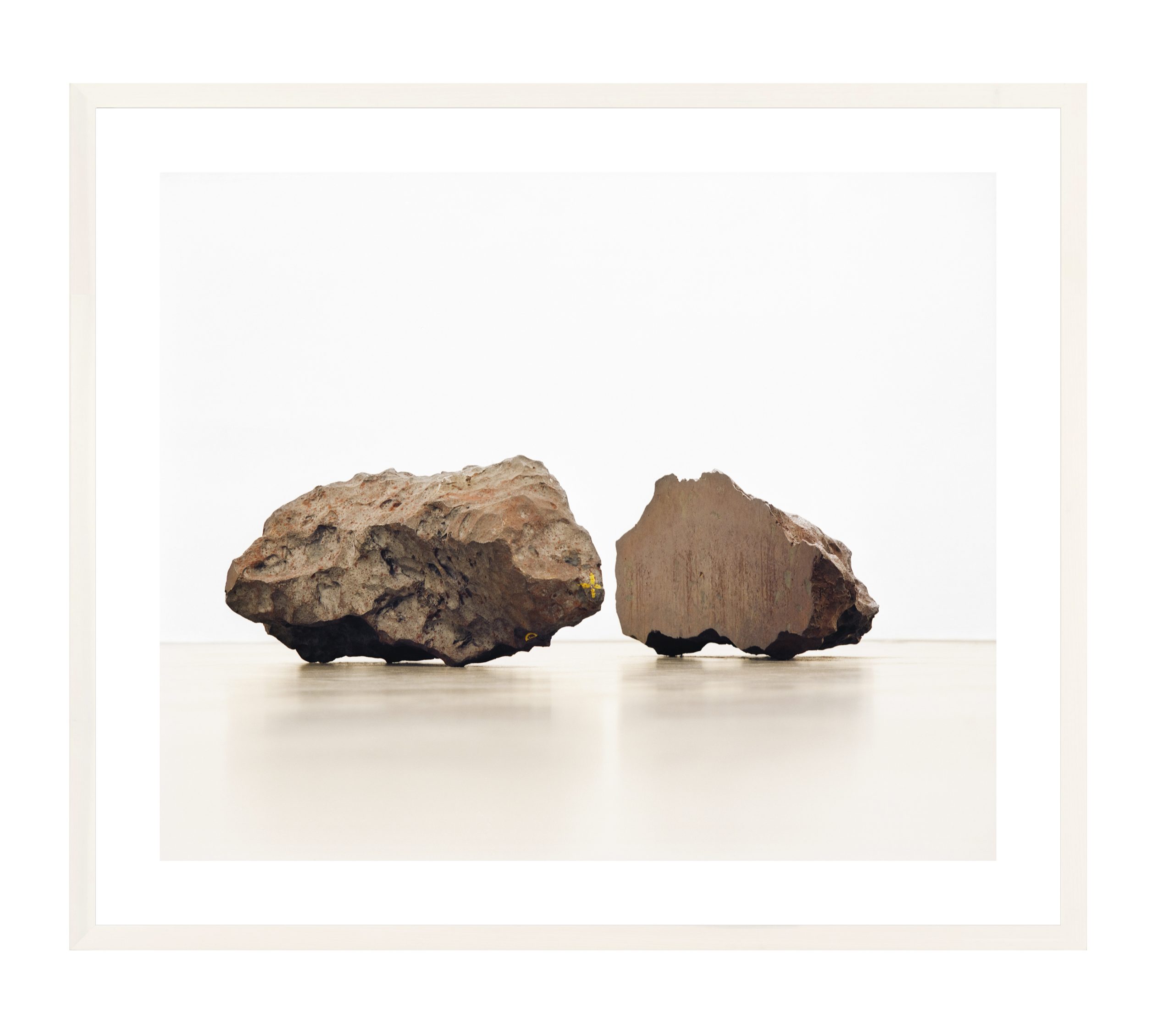In 2019 Faivovich & Goldberg conceived Encuentro con El Mataco. Invited to celebrate the 80th anniversary of the Dr. Julio Marc Provincial History Museum, in Rosario, Faivovich & Goldberg neither unified two separate pieces of a meteorite nor planned epic relocations, they did not classify confiscated specimens, nor launch a space rock into the future. They simply promoted an “encounter” with the thing itself: El Mataco, a 998-kilogram meteorite discovered by a farmer in Southern Chaco in 1937, which was sunned for more than half a century on an octagonal plinth in the Marc Museum gardens.
Moved into the museum halls in the ‘90s, El Mataco arrived to mingle with the mundane and to involuntarily shatter the traditional humanist distinction between history and natural history, human chronology and cosmological time. It was perhaps for this reason that Faivovich & Goldberg decided to rescue El Mataco from promiscuous encounters with colonial reredos and nineteenth-century historical portraits and instead foster a different sort of encounter. Set
in the middle of a dimly lit room, and submerged in an octagonal cavity that invites the observer to sit in contemplation, El Mataco seems to float in the dark night of the cosmos, emitting the faint glow of illuminated metal.
The traces of Duchamp get the thinking going, its unsettling minimalism calls for slow observation, sitting or even laying down on the soft platform and letting the encounter flourish.
Alone in the dark room, El Mataco invites us to imagine the “world without us” from which it came; not the paradisiacal Eden of the world’s infancy, but an ancient world where it existed free from observation or being named by anybody, the ultimate guarantee of authentic materialism. Faced with this pure entity in the center of the room, philosophical arguments for a new object-oriented ontology, which deconstruct several centuries of anthropocentrism to consider things without any correlation with the subject who conceives of them, seem less abstract and paradoxical.
Moreover, El Mataco, isolated in some sort of limbo, as if between question marks in a historical museum, draws attention to the fact that it is not so distant from the time of history.
In the 21th century, with humanity transformed into a powerful geological agent competing with natural forces and capable of generating catastrophic climate change, the distance between cosmological time and deep human history became diluted: everyone, human or not, is on the same drifting boat, equally belittled in front of the scale of the disaster. Floating on the thick blackness of the room—you may attend the encounter and see it for yourself—the meteorite also provides a grimmer image: a future world without us.


 Faivovich & Goldberg
Faivovich & Goldberg